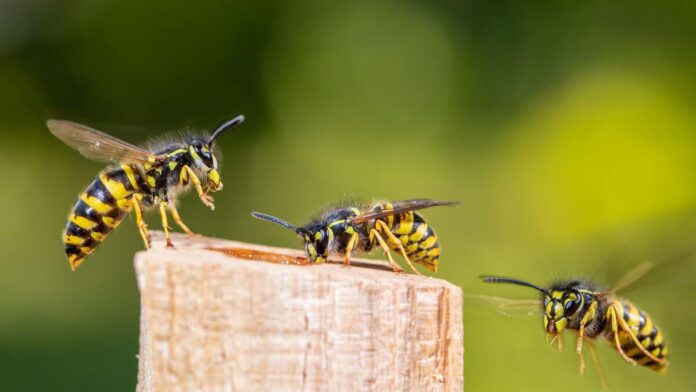Yellow jackets, while often mistaken for bees, are a type of wasp. Not only can their stings be painful, but they can also be a nuisance in your garden. If you’ve spotted yellow jackets buzzing around, don’t panic. This article will guide you through understanding these insects and the steps you can take for yellow jacket removal.
Understanding Yellow Jackets
Yellow jackets are social insects living in colonies with queens and workers. They are most active during the late summer and early fall. Recognizing them is the first step in addressing the issue.
Appearance
Yellow jackets are bright yellow with black markings. They are usually between 10 and 16 mm in size. Unlike bees, they have a slender waist and smooth bodies.
Habitat
They often build underground nests, but you may also find them in hollow trees, attics, or wall voids. Their nests are made from chewed wood pulp, giving them a papery appearance.
Why Yellow Jackets are Attracted to Gardens
Yellow jackets have a varied diet. They hunt small insects, which makes gardens an ideal hunting ground. They are also attracted to sweet substances, so if you have ripe fruits or flowers emitting sweet nectars, yellow jackets might frequent your garden more.
Safety First
Prioritizing safety is essential when dealing with yellow jackets. Their defensive nature can lead to aggressive behavior, particularly if their nest is perceived as under threat. In the event of a sting, immediate medical attention should be sought if symptoms like breathing difficulties or swelling arise.
Steps to Manage Yellow Jackets in Your Garden
If yellow jackets are in your garden, handling the situation calmly and methodically is essential.
Avoid Attractants
- Ensure garbage cans are sealed tightly.
- Pick ripe fruits immediately to prevent them from falling and rotting.
- If you have a picnic or outdoor meal, immediately clean up food and drink spills.
Natural Deterrents
- Planting wormwood, mint, or citronella can deter yellow jackets. These plants emit scents that the insects dislike.
- Essential oils like peppermint, clove, and geranium can also serve as repellents. Mix a few drops with water and spray around the garden.
Read Also: Do Polar Bears Eat Penguins?
Trapping Yellow Jackets
- Commercial traps, which use lures to attract yellow jackets, are available.
- Homemade traps can also be made using sugary solutions or meat in a container. However, ensure other beneficial insects aren’t harmed.
Locate and Remove the Nest
- If you spot many yellow jackets, there’s likely a nest nearby.
- Wait until evening or early morning when yellow jackets are less active to approach the nest.
- If the nest is in an accessible location, consider using a non-toxic insecticide spray. Ensure you’re wearing protective clothing.
- You can use a soapy water solution to neutralize underground nests. However, approach with caution.
Consider Professional Help
If you’re unsure or feel unsafe handling the situation, don’t hesitate to contact a pest control professional. They have the expertise and equipment for yellow jacket removal.
Preventing Future Infestations
Maintaining a garden environment that’s less attractive to yellow jackets can help prevent future infestations.
- Regularly inspect your garden for nests, especially during early summer.
- Seal holes or cracks in your home’s exterior to prevent yellow jackets from building nests.
- Ensure your garden is free from rotting fruits or other food sources.
- Use natural repellents and plants that deter yellow jackets.
Conclusion
While yellow jackets play a role in nature by controlling pest populations, they can be a concern when they invade our gardens. Understanding them and taking the appropriate steps can ensure a safe and harmonious garden space. Remember, always prioritize safety and consider seeking professional help if needed.






































